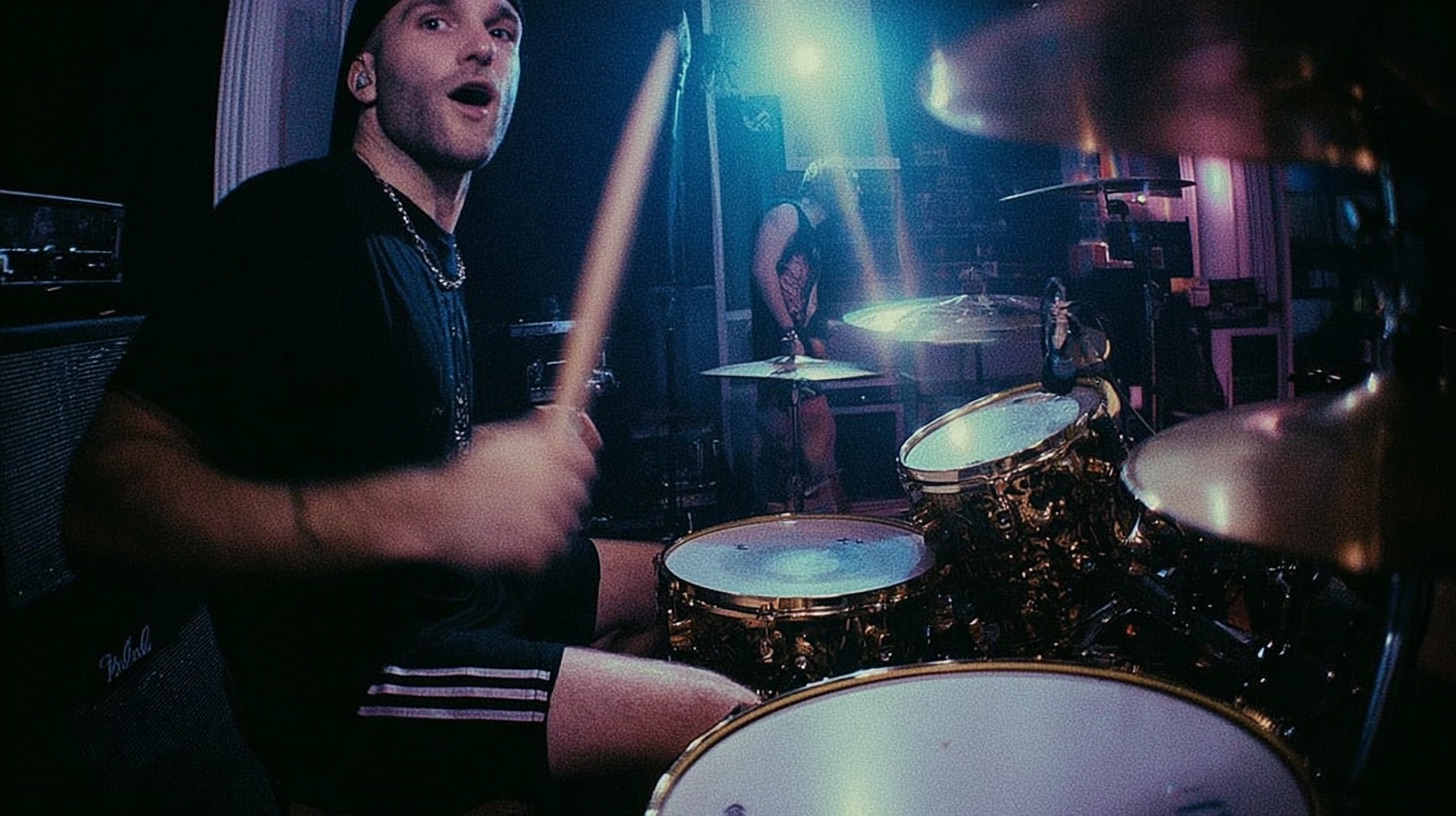
Crafting an Incredible We Came As Romans Bass Tone with Joey Sturgis
Nail The Mix Staff
Let’s be real, a massive metal track needs a bass that can hold down the low end while still cutting through a wall of guitars. The bass tone on a We Came As Romans record is the perfect example of this: it’s solid, consistent, and perfectly locked in with the drums. But how do you get there?
We got to watch legendary producer Joey Sturgis build a bass tone from scratch for a WCAR track during a Nail The Mix session. You might think it involves some impossibly complex chain of secret plugins, but his approach is surprisingly straightforward and focuses on getting the fundamentals perfect before anything else. Let’s break down his process for getting that incredible bass tone.
The Foundation: It All Starts with the DI
Before even thinking about amps or distortion, Joey emphasizes the need to start with the best possible source material. For bass, that means getting the “cleanest and well-edited bass performance” for your DI (Direct Input) track.
This is the standard you should aim for. A noisy, sloppy, or poorly recorded DI will fight you every step of the way. If your source track is clean, tight, and well-played, all the processing you do later will just enhance what’s already great, rather than trying to fix fundamental problems.
The Non-Negotiable Step: Aggressive Pitch Correction
During the session, the first thing Joey noticed was that the bass performance was slightly pitchy. For many home producers, this might be something they try to ignore or mask. For a pro like Joey, it’s a full-stop problem that has to be fixed immediately with aggressive pitch correction.
Why? Because an out-of-tune bass will constantly fight the perfectly tuned, multi-tracked guitars. This creates a subtle but noticeable dissonance that can make your entire mix feel muddy and unprofessional. Before you even touch an amp sim, you need to make sure your bass is perfectly in tune.
Finding the Right Tool for the Job
Joey’s workflow shows a real-world approach to solving this problem by trying a few different tools.
Attempt #1: Antares Auto-Tune
His first instinct was to grab a classic, Antares Auto-Tune. He set the input to “Bass Instrument,” the Tracking to 100, and the Retune Speed to 0 for a hard-tuned effect. However, the plugin had some trouble detecting the correct octave, so it wasn’t the perfect solution for this track.
Attempt #2: The Winner – Celemony Melodyne
Next, he turned to what many consider the industry standard for this task: Celemony Melodyne. While he admits he doesn’t use it daily, he quickly dialed in a rock-solid, in-tune performance. Here’s how you can do it:
- Scan the Track: First, transfer your bass audio into Melodyne and make sure it’s using a melodic or polyphonic algorithm, not a percussive one.
- Flatten the Pitch: For that super-tight, modern metal sound, you want to remove all the natural pitch wavering (vibrato). In Melodyne, you can do this by selecting all the notes (Cmd+A or Ctrl+A) and double-clicking on them with the Pitch Modulation tool. This will flatten the notes to straight lines.
- Correct the Center: Use Melodyne’s “Correct Pitch” macro to snap the notes to the grid. You can set the Pitch Center to 100% for a perfectly in-tune performance. You might want to dial back the overall intensity to around 50-80% to keep a little bit of human feel, but for this style, tight is right.
This process is absolutely crucial. Tuning your bass isn’t just a “nice-to-have”; it’s a necessary step to achieving a professional, hard-hitting mix.
Building the Tone: Simplicity Is Key
After spending all that time meticulously tuning the bass, you’d think the tone-shaping part would be complex. Nope. Joey demonstrated that a killer tone can be achieved with a less-is-more approach.
Dialing in with Line 6 Pod Farm
To get the core of the bass tone, Joey loaded up a single plugin: Line 6 Pod Farm. He simply searched for a bass amp model, pulled it up, and that was it. No complicated signal chains, no parallel tracks blended with ten different EQs (at least not yet).
The takeaway here is massive: if your DI is clean and your performance is perfectly in tune, a single, good-quality amp simulator is often all you need to get a powerful, mix-ready bass tone. The next step would be using surgical EQ strategies for modern metal to carve out space and make it fit with the guitars, but the fundamental character comes from just the amp.
Dynamics: Making the Bass Sit in the Mix
Joey makes a very important distinction: he doesn’t consider a compressor to be part of his “tone.” The amp sim is the tone. The compressor is a mixing tool used to control dynamics and make the bass sit properly in the track.
After getting the amp sound, he added a compressor and dialed it in while listening to the bass against the drums. This ensures the bass locks in perfectly with the kick, creating a tight and punchy low-end foundation. This step isn’t about changing the character of the bass, but about controlling its level so it stays present and powerful throughout the entire song without any notes jumping out or getting lost. To dive deeper, check out these essential metal compression secrets.
Get the Full Picture
Following these steps will give you a pro-level starting point for any modern metal bass tone:
- Start with a clean DI.
- Use Melodyne to tune the performance aggressively.
- Create the core tone with a simple, high-quality amp sim like Pod Farm.
- Use compression as a mixing tool to lock the bass in with the drums.
These techniques are the building blocks for a massive sound. But imagine watching Joey Sturgis apply them to the entire We Came As Romans song, making dozens of micro-decisions to glue the bass into the final mix.
We Came As Romans on Nail The Mix
Joey Sturgis mixes "Broken Statues"
Get the Session
With Nail The Mix, you can. You get the full multitracks from bands like We Came As Romans and watch the original producers mix the song from scratch, explaining every single move. Seeing how the pros do it is the ultimate game-changer. Check out the full list of sessions and start creating your best mixes ever.







